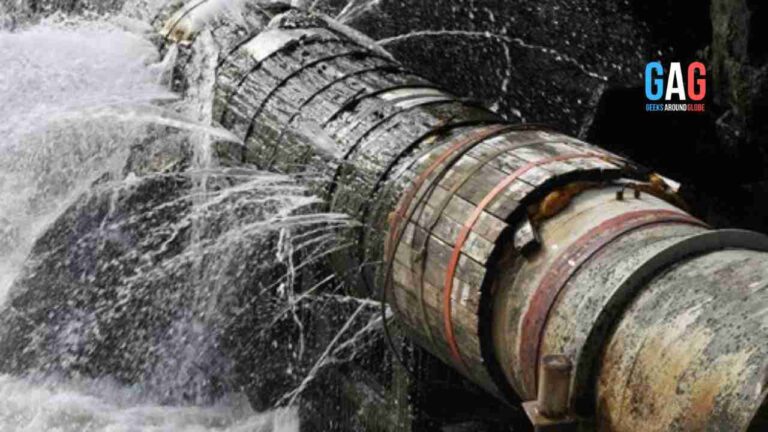Organizations face an ever-growing array of challenges. The task can often be daunting, from navigating complex regulations to ensuring adherence across various sectors. However, with the advent of automation technology, a new era of efficiency and effectiveness has emerged, revolutionizing what is compliance automation in the compliance landscape.
The Evolution of Compliance
To answer the question of what is compliance automation, one must know that historically, compliance processes relied heavily on manual efforts, requiring significant human resources and time investments. This manual approach often resulted in inefficiencies, errors, and inconsistencies, leading to compliance gaps and increased risk exposure. Recognizing these limitations, organizations began to seek alternative solutions to streamline their compliance operations.
1. Challenges of Manual Compliance Processes
The manual nature of compliance processes posed several challenges for organizations. From labor-intensive data collection to manual tracking of regulatory changes, the process was susceptible to errors and delays. Moreover, the sheer volume of regulatory requirements made it challenging for organizations to maintain compliance consistently.
2. The Emergence of Automation Technology
In response to these challenges, automation technology emerged as a game-changer in compliance management. Automation platforms revolutionized how organizations approached compliance by leveraging advanced algorithms and machine learning capabilities. Automation offers a more efficient, accurate, and scalable solution to compliance challenges, enabling organizations to streamline their processes and enhance their overall compliance posture.
3. Benefits of Automation in Compliance
The adoption of automation technology brought organizations a myriad of benefits. From enhanced accuracy and consistency to improved operational efficiency, automation transformed every facet of compliance management. Automation platforms enabled organizations to automate repetitive tasks, streamline workflows, and proactively manage risks, leading to better compliance outcomes and reduced exposure to regulatory violations.
4. Transitioning to a Digital Compliance Era
With the rapid advancements in automation technology, organizations began transitioning towards a digital compliance era. Gone were the days of manual paperwork and cumbersome processes. Instead, organizations embraced digital solutions that offered real-time insights, predictive analytics, and seamless integration with existing systems. This digital transformation empowered organizations to adapt to regulatory changes more swiftly, mitigate risks effectively, and drive continuous improvement in their compliance practices.
5. Future Trends in Compliance Automation
Looking ahead, the future of compliance automation appears promising. As technology evolves, automation platforms will become more sophisticated, offering multiple advanced capabilities such as natural language processing, predictive modeling, and artificial intelligence. Organizations will leverage these technologies to gain deeper insights into regulatory requirements, anticipate emerging risks, and optimize compliance strategies accordingly. By embracing innovation and staying abreast of technological advancements, organizations can future-proof their compliance efforts and thrive in an ever-changing regulatory landscape.
Enter Automation Technology
Automation technology has emerged as a transformative force in compliance management. Automation platforms can automate various compliance tasks by leveraging advanced algorithms and machine learning capabilities, from data collection and analysis to reporting and monitoring. This automation accelerates processes and enhances accuracy and consistency, reducing the likelihood of errors and compliance breaches.
Streamlining Compliance Processes
Centralized Data Management
Automation platforms offer a centralized repository for compliance-related data, allowing organizations to manage and access information from various sources efficiently. This centralized approach eliminates manual data collection and aggregation, reducing the risk of errors and inconsistencies.
- Automated Data Collection: Automation technology automates collecting compliance data from diverse sources, including regulatory documents, internal policies, and external databases.
- Organized Data Repository: Compliance automation platforms organize data in a structured manner, making it easily searchable and accessible to relevant stakeholders.
- Real-Time Updates: With automation, organizations can receive real-time updates on regulatory changes, ensuring timely awareness and action.
Efficient Regulatory Tracking
By leveraging automation technology, organizations can streamline the tracking of regulatory changes and updates. Automation platforms continuously monitor regulatory developments, providing organizations with timely notifications and alerts regarding changes that may impact compliance requirements.
- Continuous Monitoring: Automation technology enables organizations to monitor regulatory sources for updates and changes continuously.
- Timely Notifications: Compliance automation platforms provide timely notifications and alerts regarding regulatory changes, ensuring organizations stay informed.
- Impact Assessment: Automation platforms facilitate the assessment of the impact of regulatory changes on existing compliance processes and policies.
Real-Time Adjustments
Automation technology enables organizations to implement necessary adjustments to compliance processes in real-time. By automating workflows and decision-making processes, organizations can respond swiftly to regulatory changes and emerging risks, minimizing the likelihood of compliance breaches.
- Automated Workflow Adjustments: Compliance automation platforms automate workflows, allowing organizations to adjust processes in response to regulatory changes efficiently.
- Dynamic Compliance Policies: Automation technology enables organizations to update compliance policies and procedures based on evolving regulatory requirements.
- Risk Mitigation: Automation platforms help organizations mitigate compliance risks and maintain regulatory adherence by facilitating real-time adjustments.
Compliance automation streamlines complex processes by offering centralized data management, efficient regulatory tracking, and the ability to implement real-time adjustments. By leveraging automation technology, organizations can enhance compliance efforts, reduce operational burdens, and ensure regulatory adherence.
Enhancing Accuracy and Consistency
Manual compliance processes are inherently prone to human error and inconsistency. Employees may need to pay more attention to critical details, misinterpret regulations, or apply policies inconsistently, resulting in compliance gaps and vulnerabilities. Compliance management operates with high precision and consistency, ensuring compliance tasks are executed accurately and uniformly across the organization.
Proactive Risk Management
Effective risk management is integral to compliance success. Automation technology empowers organizations to adopt a proactive approach to risk management by continuously monitoring regulatory developments, identifying potential risks, and implementing proactive measures to mitigate them. Automation platforms can anticipate emerging risks by leveraging data analytics and predictive modeling and providing actionable insights to guide decision-making processes.
Driving Operational Efficiency
In addition to improving compliance outcomes, automation technology drives significant operational efficiencies. By automating repetitive tasks and diverse workflows, organizations can redeploy human resources to more strategic activities, such as risk analysis, compliance strategy development, and stakeholder engagement. This resource optimization not only decreases operational costs but also enhances overall organizational performance.
Ensuring Regulatory Adherence
Compliance automation enables organizations to maintain a robust framework for regulatory adherence. Automation platforms can systematically monitor regulatory requirements, assess compliance status, and generate comprehensive reports demonstrating adherence to regulatory authorities and stakeholders. This transparent approach fosters trust and credibility while mitigating non-compliance penalties and reputational damage risk.
Adapting to Change
The regulatory landscape constantly evolves, with new regulations, updates, and amendments introduced regularly. Compliance automation gives organizations the agility and flexibility to adapt to these changes effectively. Automation platforms can automatically update compliance frameworks, notify stakeholders of regulatory updates, and facilitate seamless integration of new requirements into existing processes.
Embracing Innovation
In conclusion, compliance automation represents a paradigm shift in how organizations manage regulatory compliance. By harnessing the power of automation technology, organizations can revolutionize their compliance operations, driving efficiency, accuracy, and agility. As regulatory complexity increases, embracing innovation becomes imperative for organizations seeking to navigate the compliance landscape successfully. Organizations can position themselves for compliance success in the digital age by going beyond manual processes and embracing automation.







